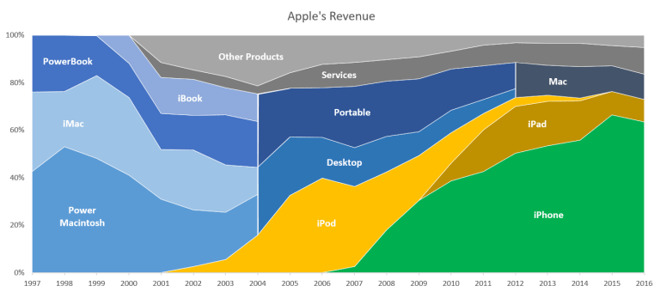Editorial: The future of Apple’s Macintosh
By Jim Bask
models have not been updated in many months, but it’s also true that Apple faces real constraints in dramatically expanding its Mac sales. Here’s a look at what’s involved, and what’s possible for the future of Apple’s graphical mouse-based computing platform.

More troubling to many Mac users–and potential Mac buyers with specialized needs–is that fact that some of Apple’s Mac hardware hasn’t been updated for years, creating uncertainty about whether Apple still values some of its smaller niche businesses that were once considered strategically important, including pro audio, video, graphics and publishing.
This is particularly the case in the face of the massive adoption of iOS, Apple’s Post-PC platform powering iPhone and iPad, which has become the company’s primary source of revenue and profits.
Where’re the updates to existing Macs?
Consider Apple’s current Compare Mac Models page, which lists a dozen Mac products. Seven of those are notebooks, three are iMacs, and two haven’t been materially updated in years: Mac mini and Mac Pro.
Last October’s Late 2016 MacBook Pro was also considered a delayed refresh; the company’s best selling high-end notebooks hadn’t been previously updated in more than a year.
However, that model got more than just a new speed bump; it involved an entirely new generation of system architecture from its lighter, thinner case to its Wide Color display to its immersive audio, PCIe SSD storage and Thunderbolt 3 connectivity.

Apple also still sells its previous generation of MacBook Pros to reach a lower entry price. Beyond those Pro notebooks, Apple also sells its Early 2016 MacBook (with Retina Display) and continues to sell what is effectively the “previous version” of this model: the Early 2015 MacBook Air.
Apple no longer sells anything in the category of the former iBook or plastic MacBooks from a decade ago, nor a large screen 17 inch MacBook Pro. Underneath its lowest priced notebook, the $999 13 inch MacBook Air, Apple markets iPad Pro and iPad models.
Among its desktop models, Apple sells three main configurations of the Late 2015 iMac, along with the “Late 2014 Mac mini” and the “Late 2013 Mac Pro.” The company no longer sells any configuration of Xserve, nor a specialized version of a Mac Pro Server or Mac mini Server.
Read the full article here.

